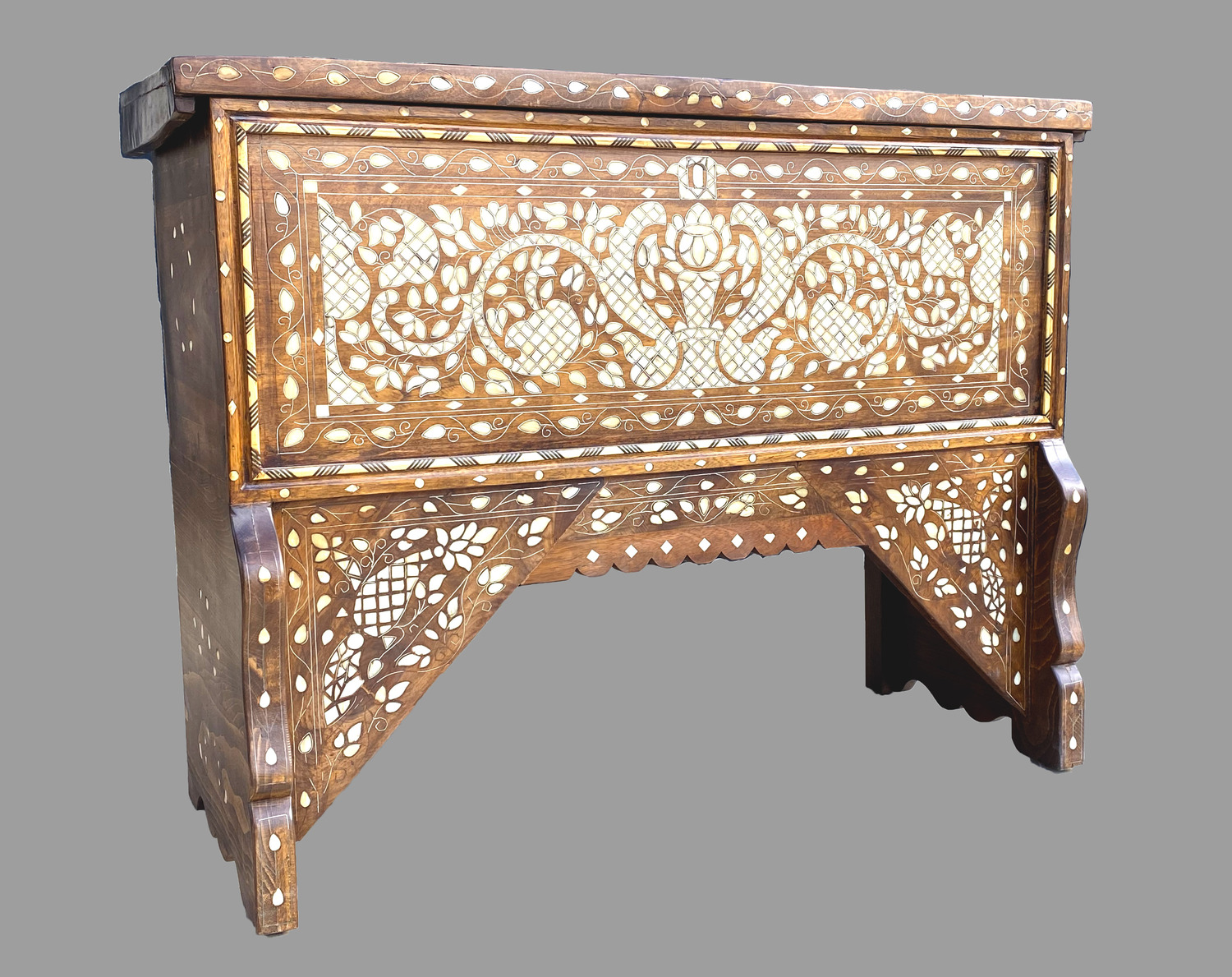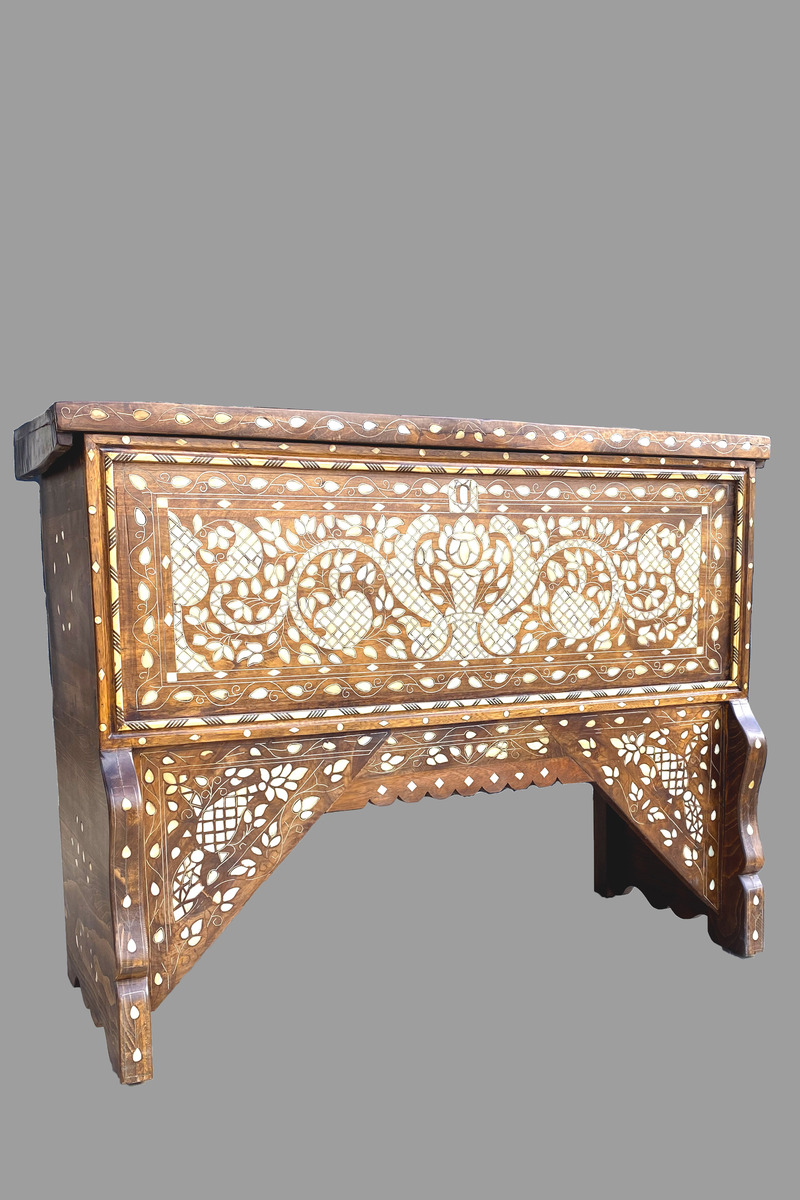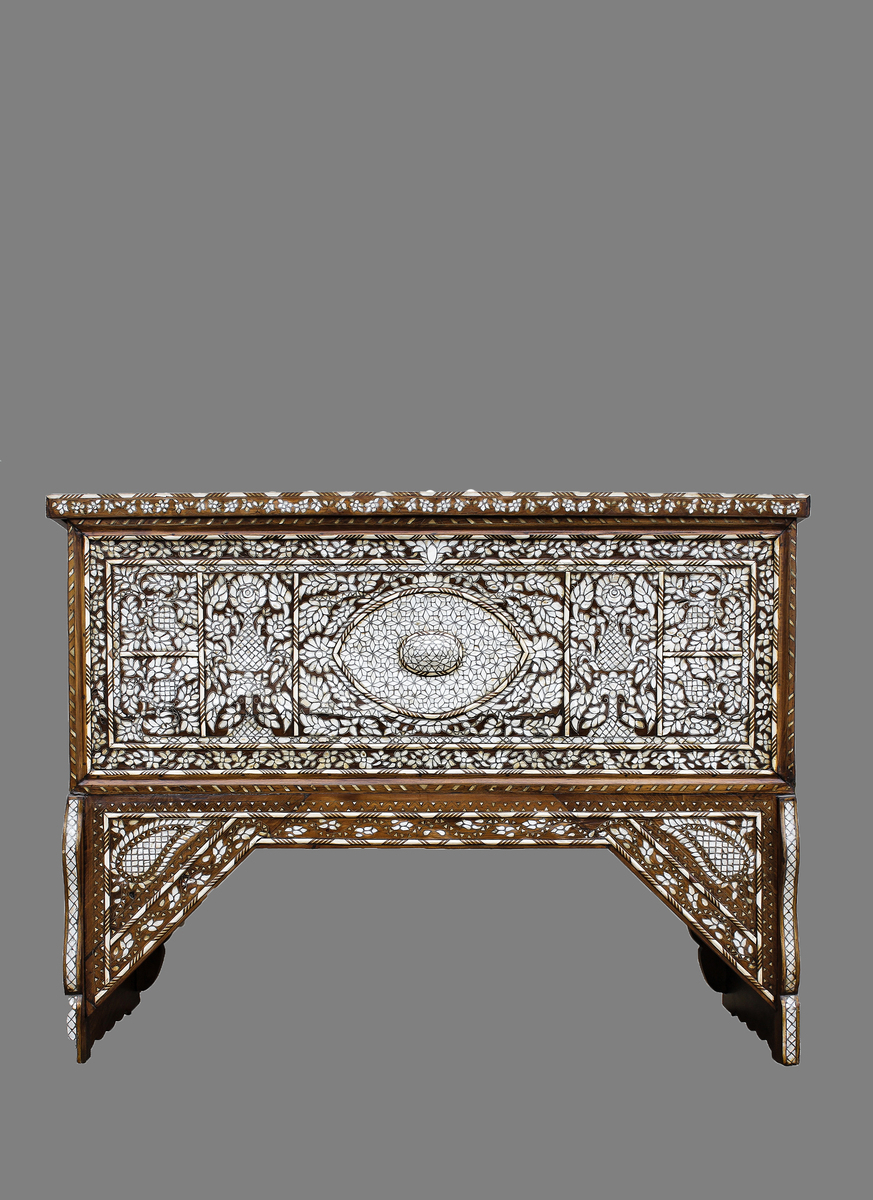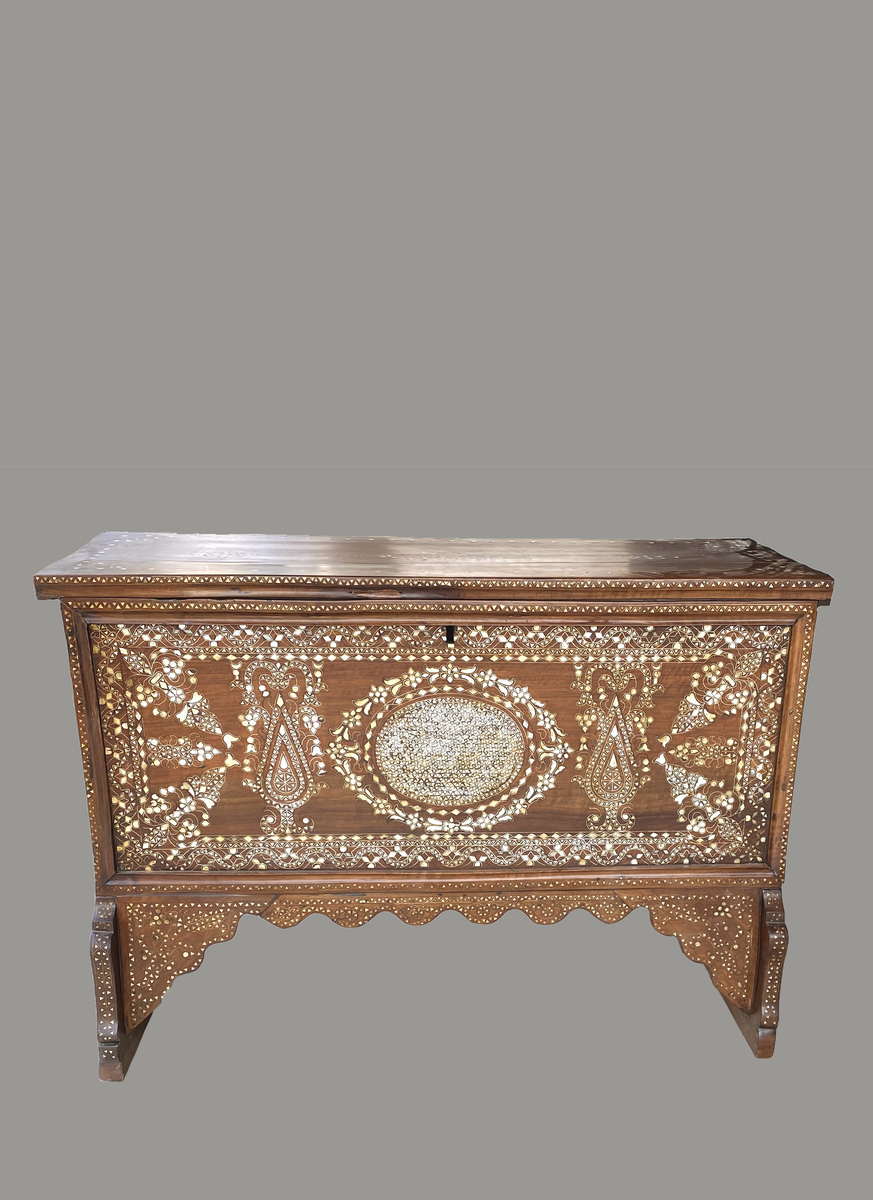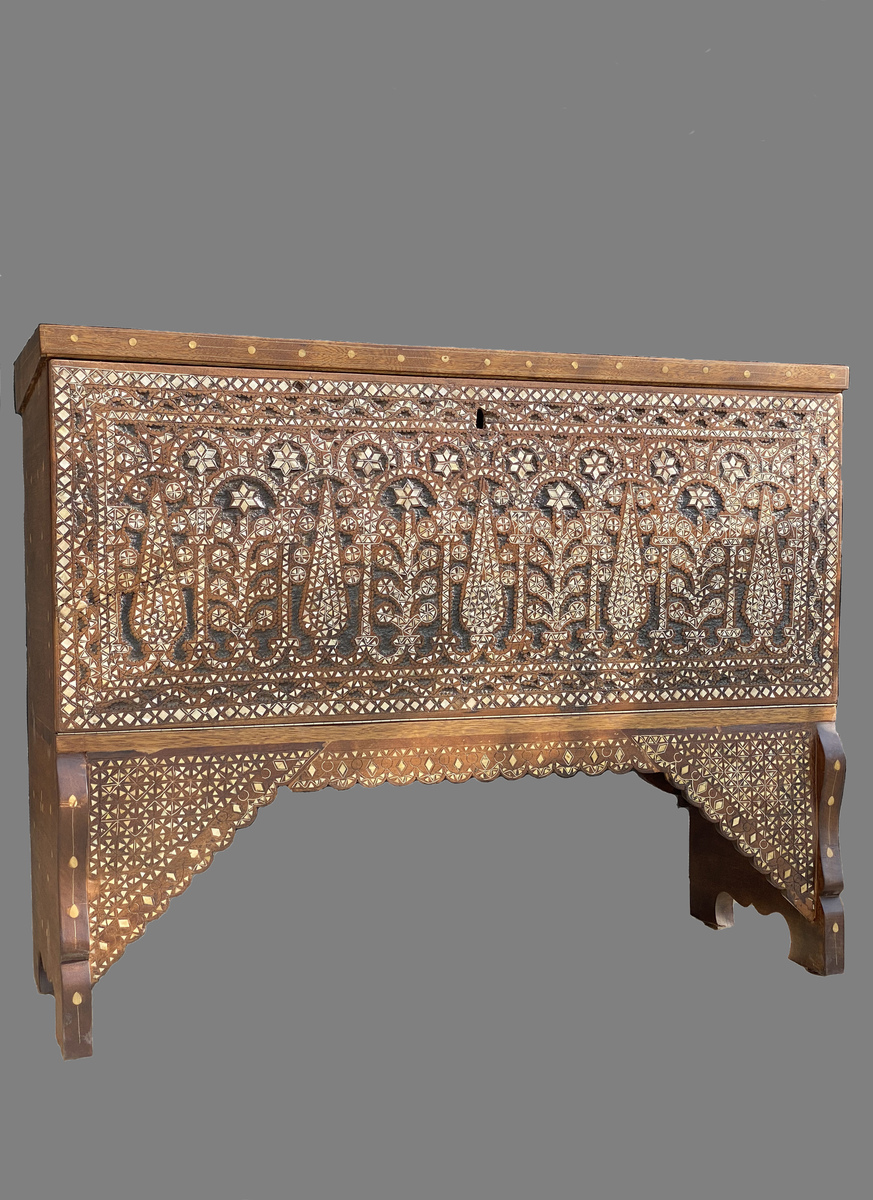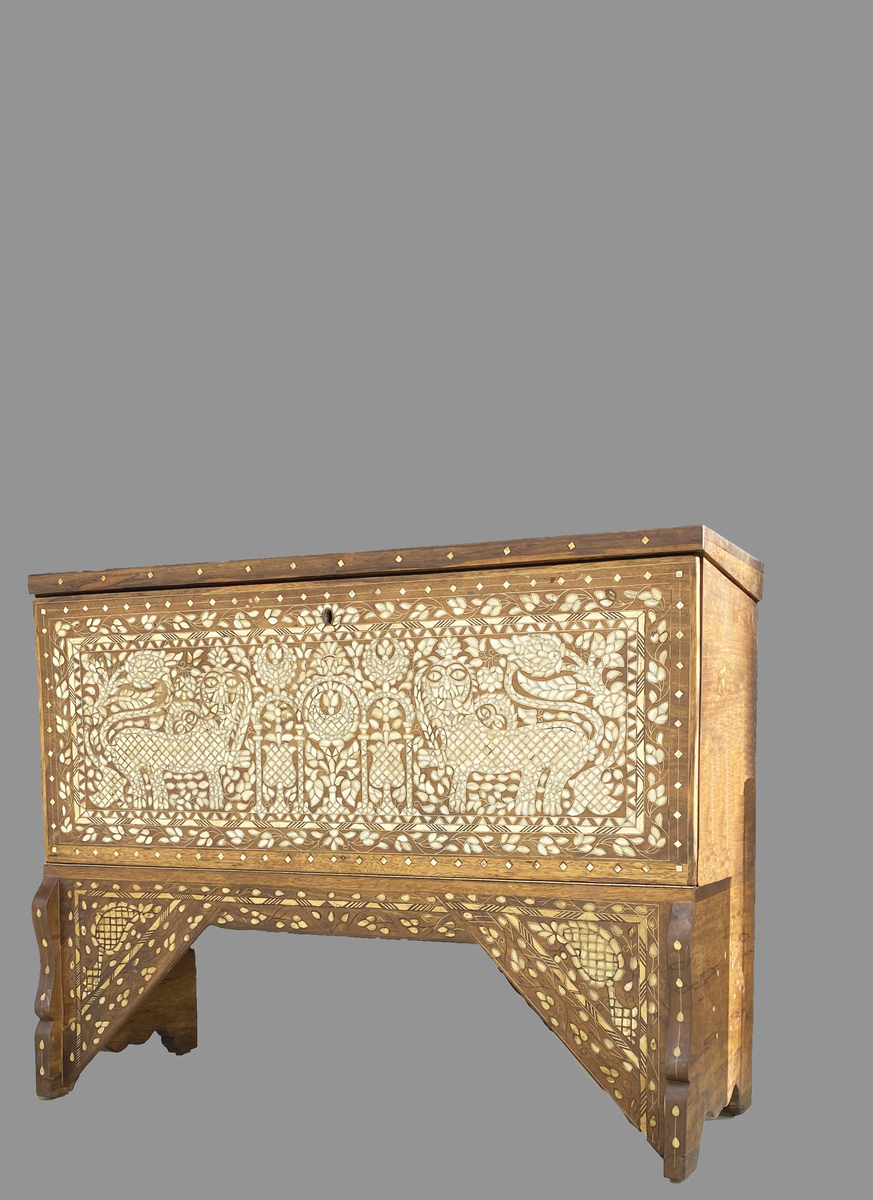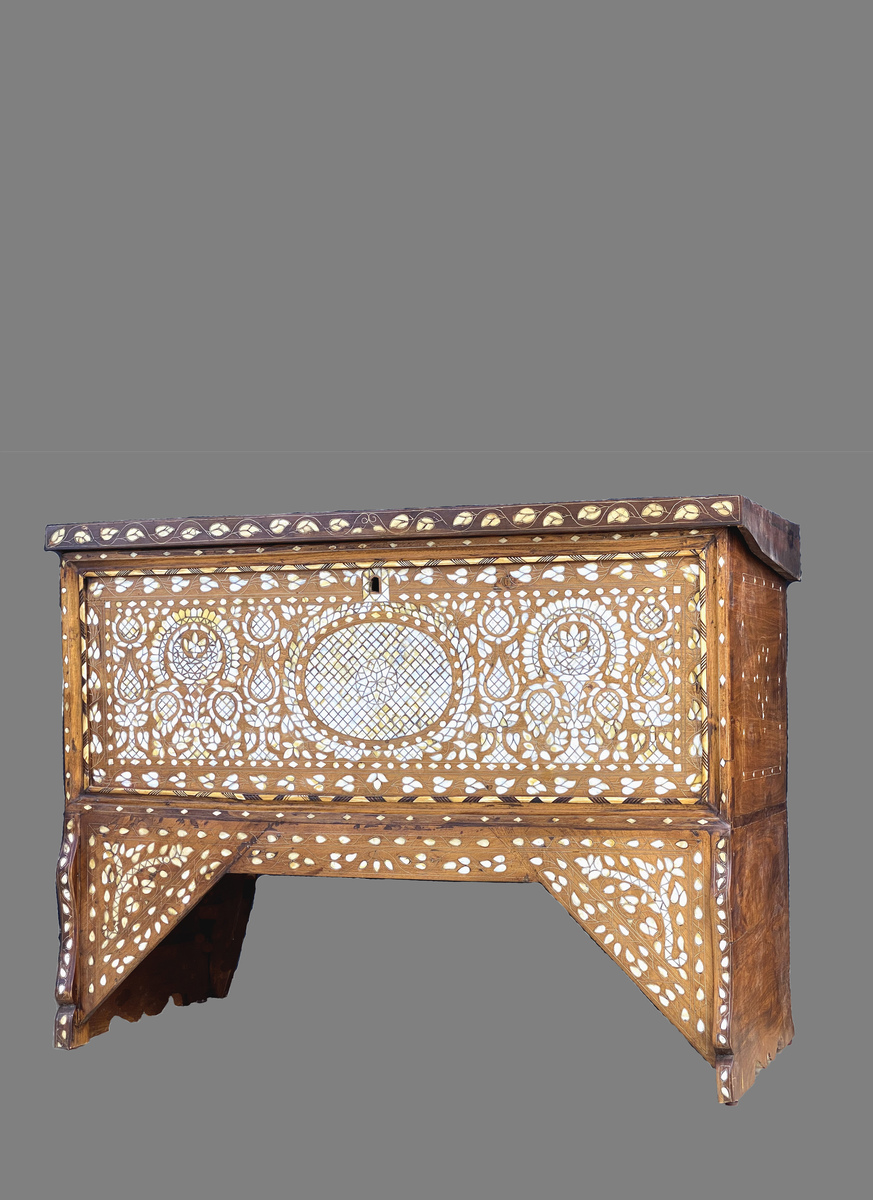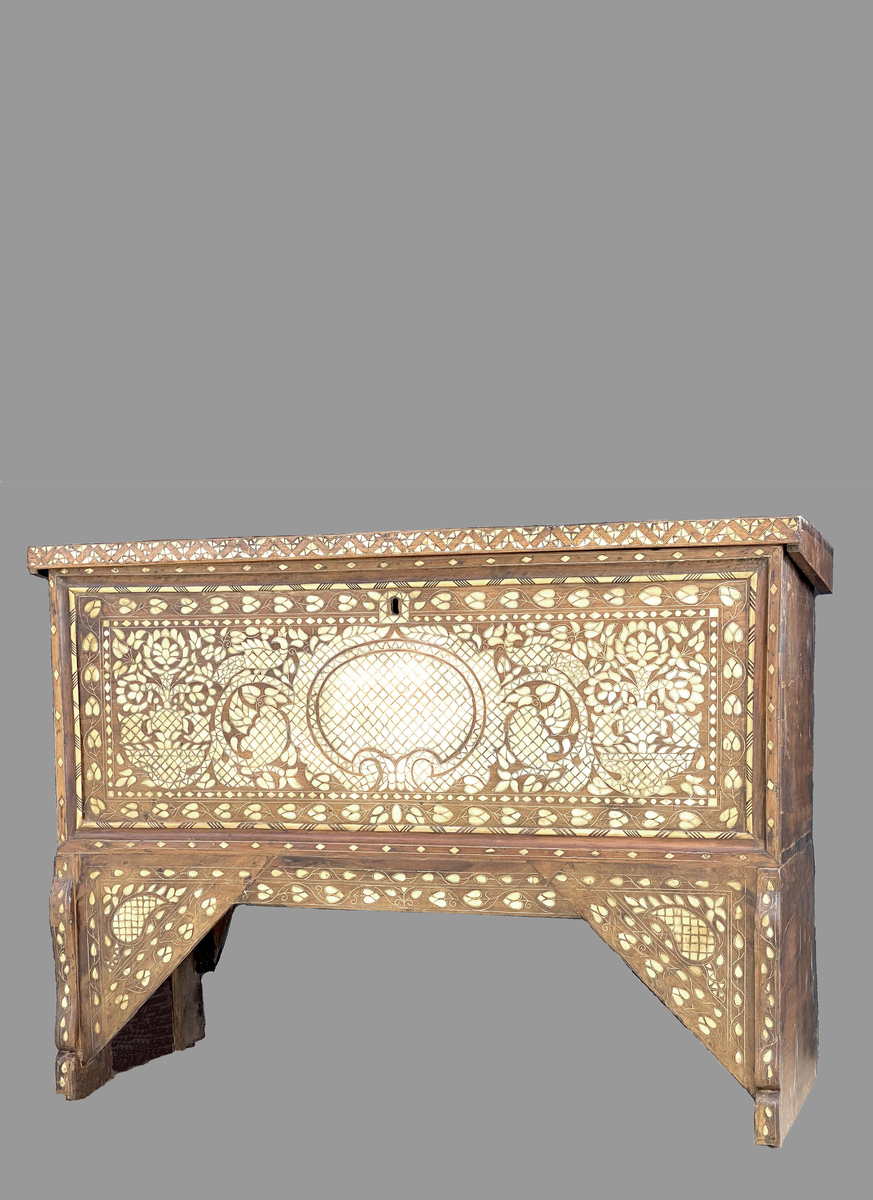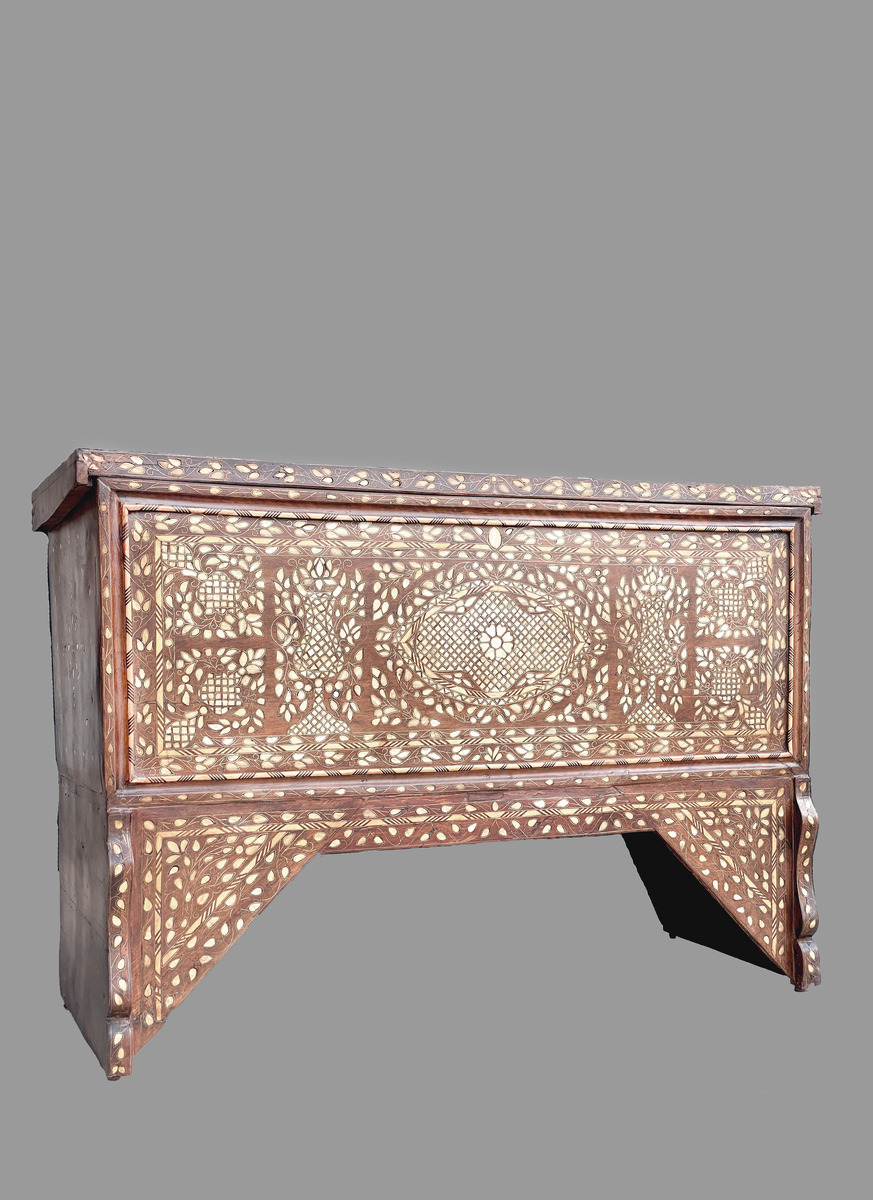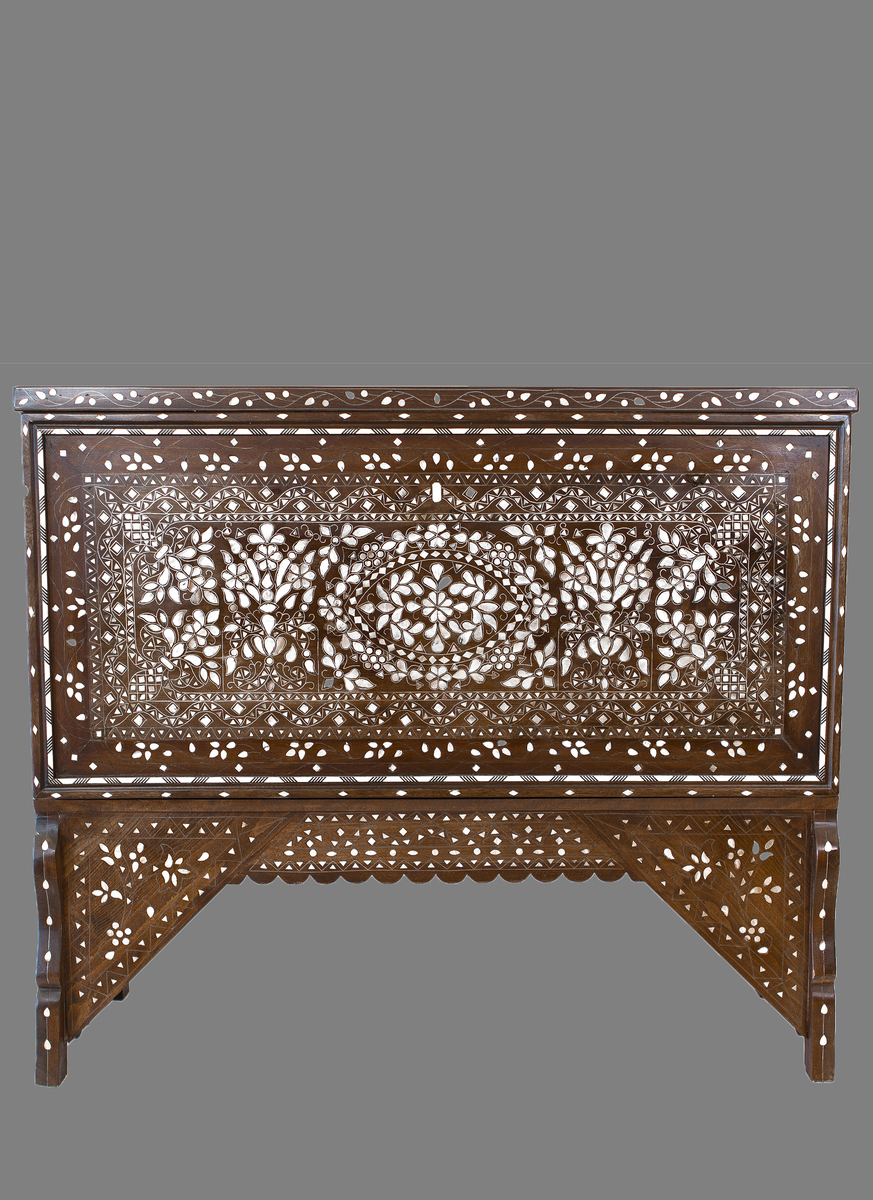Description
The chest’s façade shimmers with an intricate mosaic of hand-cut mother-of-pearl, bone, and fine walnut wood, forming a flowing tapestry of cultural symbolism. At its heart, a symmetrically balanced floral composition unfurls around a central lotus-like bloom, the eternal symbol of purity, regeneration, and life’s triumph — a motif revered across Islamic and ancient Middle Eastern traditions.
Flanking the central motif, stylized foliage, palmettes, and latticework elegantly merge into a continuous vine pattern (arabesque), representing infinite growth and divine order. The inlaid vines are emblematic of the paradisiacal gardens (Jannah) described in the Quran — an artistic metaphor for fertility, abundance, and the blessings of a flourishing marriage.
The apron and elegantly curved legs are richly embellished with complementary vegetal and geometric motifs, creating a harmonious dialogue between nature’s organic beauty and the disciplined mathematics of Islamic art. Every element, from the smallest petal to the smallest tessellation, speaks to centuries of artisanal devotion.
This tradition of masterful inlay was preserved by legendary artisans of Damascus such as Hanna Al-Ajami, Michel Bitar, and Youssef Jiryes, whose workshops in the 19th and early 20th centuries set the global standard for mother-of-pearl artistry. Their influence, evident in the precision and lyrical beauty of this chest, ensured that such pieces were celebrated both in Ottoman palaces and among European collectors seeking the finest Oriental craftsmanship.
Painstakingly restored to conserve the patina while reviving the original luminosity of the inlay, this piece stands as a resplendent testament to love, craftsmanship, and cultural continuity — a rare heirloom for discerning collectors and connoisseurs of Middle Eastern decorative arts.


